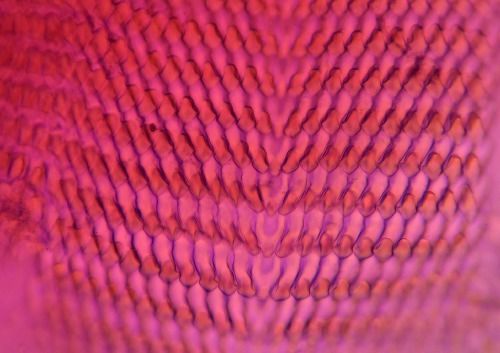
Nutrition
Due to the fact that there is little information known about Patera laevior’s diet in general, the information on the page will be directed towards class Gastropoda nutrition in general.
 Snails do not have strong
crushing mouthparts like a crab's mandible
nor does it have a durable set of teeth like a mammal (Nordsieck,
2012). Instead, snails have a specialized food processing
organ that is common to all molluscs, it is often called a radula or
rasping tongue (Nordiseck,
2012). Snails use their radula to rasp down on, or scrape off
food as opposed to biting it off (Nordisek,
2012). The radula is a tongue like structure inside of the mouth
that scrapes materials off rocks such as algae (Nordsieck, 2012).
Small toothlets on the band move through the food in the snails
mouth and while doing so, they rasp away small particles that are
then moved back into the snail's gullet (Nordsieck,
2012). Different species of snails commonly have
differently-shaped toothlets, thus associated with Patera
laevior's common name the smooth bladetooth (Dourson,
2010).
Snails do not have strong
crushing mouthparts like a crab's mandible
nor does it have a durable set of teeth like a mammal (Nordsieck,
2012). Instead, snails have a specialized food processing
organ that is common to all molluscs, it is often called a radula or
rasping tongue (Nordiseck,
2012). Snails use their radula to rasp down on, or scrape off
food as opposed to biting it off (Nordisek,
2012). The radula is a tongue like structure inside of the mouth
that scrapes materials off rocks such as algae (Nordsieck, 2012).
Small toothlets on the band move through the food in the snails
mouth and while doing so, they rasp away small particles that are
then moved back into the snail's gullet (Nordsieck,
2012). Different species of snails commonly have
differently-shaped toothlets, thus associated with Patera
laevior's common name the smooth bladetooth (Dourson,
2010).
Terrestrial snails are often herbivorous, which means they only feed on plants and on different plant parts such the leaves, stems, soft bark, and fruits on the plants (Klappenback, 2012). Other food sources can include algae, tree sap, fungi, lichens, and a vast variety of vegetation (Nordsieck, 2012). Most snails are generalists, which means a snail will eat food that is abundant and easily found in its environment; therefore a snail's diet can differ from one species to another (Dourson, 2010).

Snails need calcium to build their shells (Klappenback, 2012). Snails obtain the calcium needed to build their shells using their radula to grind bits from sources such as dirt and rocks such as limestone (Klappenback, 2012). The calcium snails ingest is absorbed during digestion and is than later used by the mantle to create the shell (Klappenback, 2012).